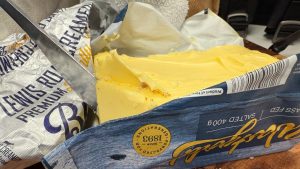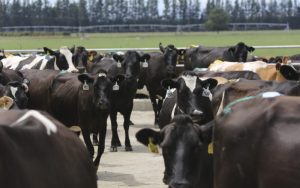
Could milk washed away in wastewater be turned into fuel or feedstock? Researchers are finding out.
Researchers are looking into how they can recover the millions of litres of milk lost in wastewater every year and extract value from it by turning it into fuel, bioplastics or feedstocks.
Milk in wastewater comes from washing systems that are in direct contact with milk or dairy products.
Wastewaters consist of fractions of milk equivalent to approximately 2% of total milk processed, a European study showed.
If compared to New Zealand systems, where about 21 billion litres of milk is produced annually, the loss equates to 420 million litres of milk, or the equivalent annual production of approximately 98,000 cows.
AgResearch senior scientist Mariza Gomes Reis said to extract milk from wastewater, a method called the Dissolved Air Flotation (DAF) System is used.
The method is proven and is in widespread use in dairy processing in New Zealand.
“The process involves dissolved air being released into a liquid stream that contains the milk solids (mainly fats and proteins). This released air forms tiny bubbles that attach to the milk solids in the liquid stream and cause the solids to float to the surface, where they can be removed.
“Chemicals may also be added to improve the removal of the solids.”
Reis said there are a range of methods, such as chemical modification, in which food waste components can be used for different products and purposes.
“One of these is the use of components such as lipids and carbohydrates from foods to be used in producing fuels.
“At AgResearch, we have explored the potential of material extracted from dairy wastewater being used in electrical devices. Our study has been funded by the Bioresource Processing Alliance and KiwiNet, as an initial proof of concept. Therefore, our results are preliminary, and further studies are required before we can provide more information.”
Extracting milk from wastewater is necessary because like other food industries, the dairy industry has to consider the environmental impacts of effluent discharged from its processing facilities.
“The DAF system is a standard procedure used by the dairy industry to extract the milk solids. The extracted solids have historically been disposed of on land, but more recently have been used for feed for animals such as pigs.”
Technical supervisor at Scion Alyesha Candy spoke at a recent AgResearch virtual dairy workshop about the potential to transform waste into products such as feedstock and bioplastics.
The extraction of milk solids follows the same method, DAF, but what is done with the milk solids after will differ.
You can now read the most important #news on #eDairyNews #Whatsapp channels!!!
🇺🇸 eDairy News INGLÊS: https://whatsapp.com/channel/0029VaKsjzGDTkJyIN6hcP1K

























